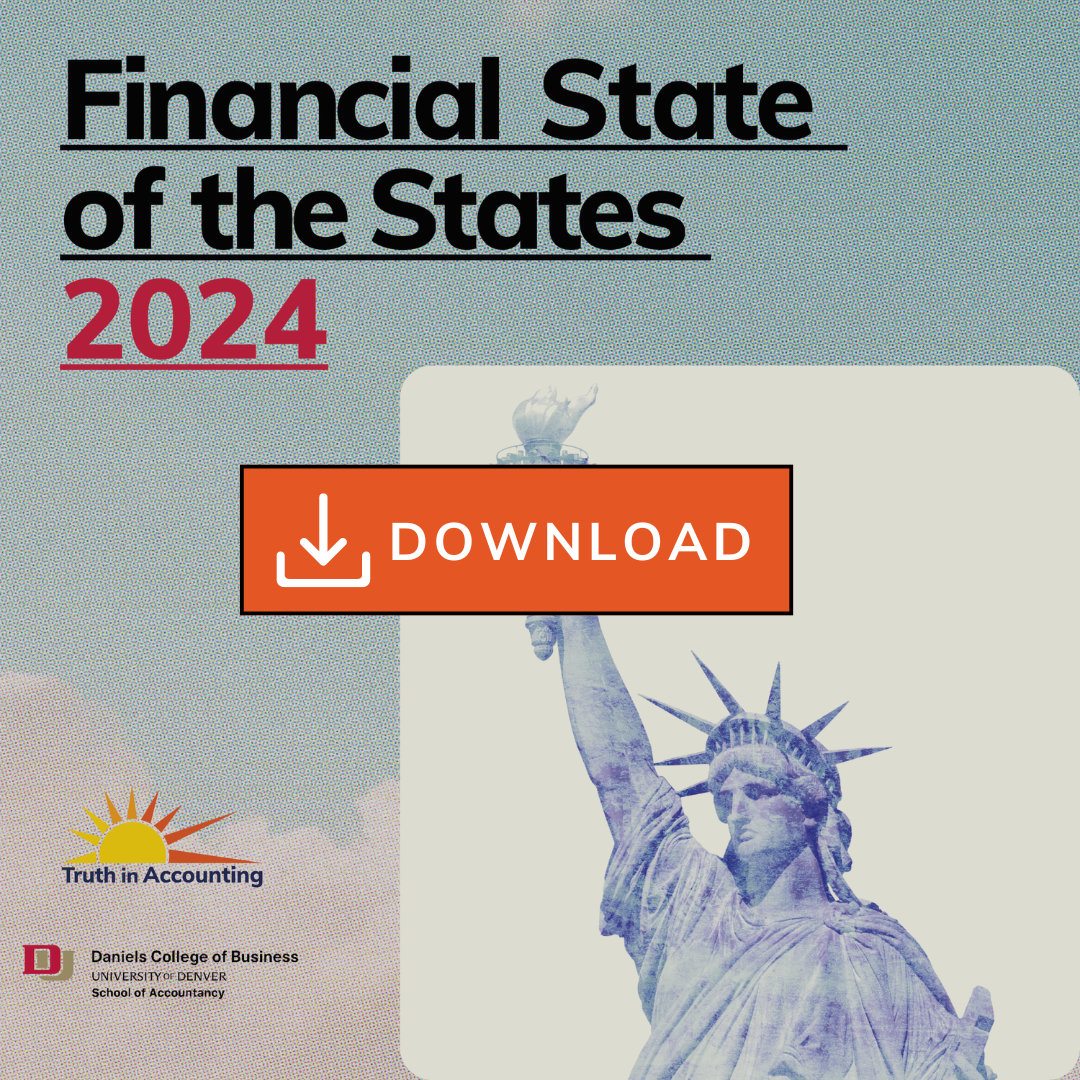All states, except Vermont, have a balanced budget requirement, which means spending cannot exceed revenue in a given year. Yet, when you analyze a state's financial report, the majority of state governments are in the red. This means that to balance the budget—as is required by law in 49 states—elected officials have not included the true costs of the government in their budget calculations and have pushed costs onto future taxpayers. Unfortunately, the majority of states claim balanced budgets by shortchanging their retirement obligations.
Elected officials are able to get away with these false claims of a balanced budget because state governments follow cash-basis accounting. With cash-based accounting, financial reports show expenses only when money is paid, not when debt or future expenses are incurred. This type of accounting encourages governments to underfund retirement obligations and count borrowed money as earned revenue. But citizens deserve the truth about state government finances. We present state finances using full-accrual accounting, which counts all expenses when they are incurred, not when they are paid.
Financial State of the States
This comprehensive analysis of the 50 states’ finances includes the most up-to-date state finance and pension data, trends across the states, and key findings on a consistent basis since fiscal year 2009. The report is based on each state's audited Annual Comprehensive Financial Report and retirement plans’ reports.
Previous Financial State of the States Reports
Financial Transparency Score Report
Report that scores each state government based on how transparent they are to the public about their finances.
2024 Financial Transparency Score
Previous Financial Transparency Score Reports
State Financial Reports
Links to each state's audited Annual Comprehensive Financial Report (ACFR)
State Budget Reports
The Truth About Balanced Budgets A Fifty State Study
Illinois budget transparency project
State Budget Timelines
| States | Budget Cycle | Latest Budget Release Date |
| Alabama | Annual | February 4, 2025 |
| Alaska | Annual | December 15, 2024 |
| Arizona | Annual | January 17, 2025 |
| Arkansas | Annual | November 21, 2024 |
| California | Annual | January 10, 2025 |
| Colorado | Annual | November 1, 2024 |
| Connecticut | Annual | February 5, 2025 |
| Delaware | Annual | January 6, 2025 |
| Florida | Annual | February 3, 2025 |
| Georgia | Annual | January 16, 2025 |
| Hawaii | Annual | December 16, 2024 |
| Idaho | Annual | January 6, 2025 |
| Illinois | Annual | Due February 19, 2025 |
| Indiana | Annual | January 16, 2025 |
| Iowa | Annual | January 14, 2025 |
| Kansas | Annual | January 16, 2025 |
| Kentucky | Biennial | N/A |
| Louisiana | Annual | Due 45 days before legislature convenes |
| Maine | Annual | January 10, 2025 |
| Maryland | Annual | January 15, 2025 |
| Massachusetts | Biennial | January 22, 2025 |
| Michigan | Annual | February 5, 2025 |
| Minnesota | Annual | January 16, 2025 |
| Mississippi | Annual | November 15, 2024 |
| Missouri | Annual | January 28, 2025 |
| Montana | Biennial | November 13, 2024 |
| Nebraska | Annual | January 15, 2025 |
| Nevada | Biennial | January 15, 2025 |
| New Hampshire | Annual | Due February 15, 2025 |
| New Jersey | Annual | Due February 25, 2025 |
| New Mexico | Annual | December 12, 2024 |
| New York | Annual | January 21, 2025 |
| North Carolina | Biennial | Due in March |
| North Dakota | Biennial | January 15, 2025 |
| Ohio | Biennial | February 3, 2025 |
| Oklahoma | Annual | February 3, 2025 |
| Oregon | Annual | December 1, 2024 |
| Pennsylvania | Annual | February 4, 2025 |
| Rhode Island | Annual | January 16, 2025 |
| South Carolina | Annual | January 13, 2025 |
| South Dakota | Annual | December 3, 2024 |
| Tennessee | Annual | February 10, 2025 |
| Texas | Biennial | N/A |
| Utah | Annual | December 5, 2024 |
| Vermont | Biennial | January 28, 2025 |
| Virginia | Biennial | December 13, 2024 |
| Washington | Annual | December 17, 2024 |
| West Virginia | Annual | February 12, 2025 |
| Wisconsin | Biennial | Due in February |
| Wyoming | Biennial | December 14, 2024 |




